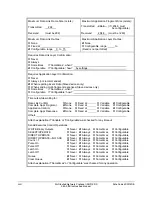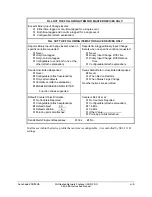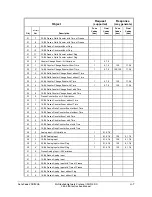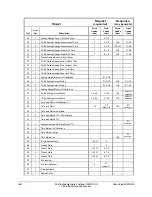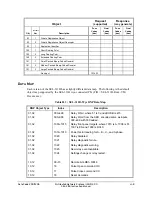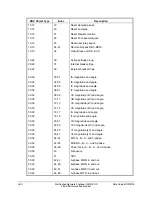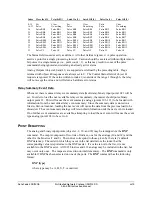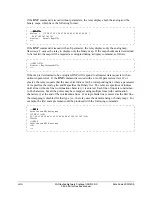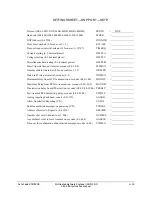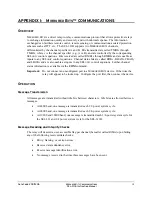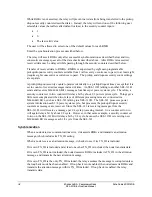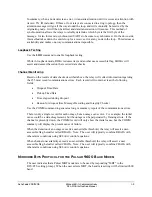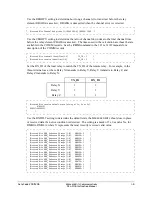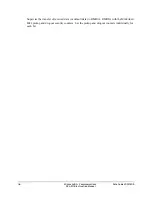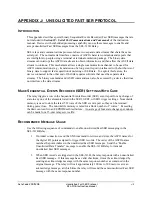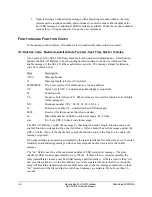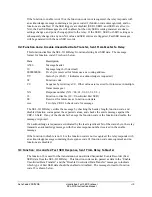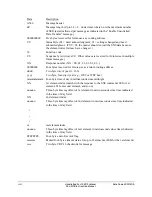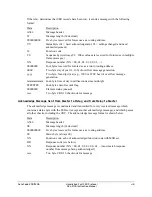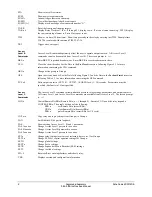
I-2
M
IRRORED
B
ITS
Communications
Date Code 20011205
SEL-311B Instruction Manual
While ROK
x
is not asserted, the relay will prevent new data from being transferred to the pickup
dropout security counters described later. Instead, the relay will send one of the following user
selectable values (hereafter called default values) to the security counter inputs:
·
1
·
0
·
The last valid value
The user will be allowed to select one of the default values for each RMB.
Enter the synchronization process described below.
The relay will assert ROK
x
only after successful synchronization as described below and two
consecutive messages pass all of the data checks described above. After ROK
x
is reasserted,
received data may be delayed while passing through the security counters described below.
Transfer of received data to RMB1
x
–
RMB8
x
is supervised by eight user-programmable
pickup/dropout security counters settable from 1 (allow every occurrence to pass) to at least eight
(require eight consecutive occurrences to pass). The pickup and dropout security count settings
are separate.
A pickup/dropout security counter operates identically to a pickup/dropout timer, except that it is
set in counts of received messages instead of time. An SEL-311B talking to another SEL-311B
sends and receives M
IRRORED
B
ITS
messages four times per power system cycle. Therefore, a
security counter set to two counts will delay a bit by about 1/2 power system cycle. Things get a
little more complicated when two relays of different processing rates are connected via
M
IRRORED
B
ITS
, such as a SEL-321 talking to a SEL-311B. The SEL-321 processes power
system information each 1/8 power system cycle, but processes the pickup/dropout security
counters as messages are received. Since the SEL-321 is receiving messages from the
SEL-311B, it will receive a message per 1/4 cycle processing interval. So a counter set to two
will again delay a bit by about 1/2 cycle. However, in that same example, a security counter set
to two on the SEL-311B will delay a bit by 1/4 cycle, because the SEL-311B is receiving new
M
IRRORED
B
ITS
messages each 1/8 cycle from the SEL-321.
Synchronization
When a node detects a communications error, it deasserts ROK
x
and transmits an attention
message, which includes its TX_ID setting.
When a node receives an attention message, it checks to see if its TX_ID is included.
If its own TX_ID is included and at least one other TX_ID is included, the node transmits data.
If its own TX_ID is not included, the node deasserts ROK
x
, includes its TX_ID in the attention
message, and transmits the new attention message.
If its own TX_ID is the only TX_ID included, the relay assumes the message is corrupted unless
the loop back mode has been enabled. If loop back is not enabled, the node deasserts ROK
x
and
transmits the attention message with its TX_ID included. If loop back is enabled, the relay
transmits data.
Summary of Contents for SEL-311B
Page 6: ......
Page 8: ......
Page 10: ......
Page 24: ......
Page 26: ......
Page 122: ......
Page 124: ......
Page 138: ......
Page 168: ......
Page 172: ......
Page 254: ......
Page 282: ......
Page 306: ......
Page 348: ......
Page 364: ......
Page 366: ......
Page 448: ......
Page 460: ......
Page 466: ......
Page 476: ......
Page 482: ......
Page 494: ......
Page 500: ......
Page 522: ......
Page 526: ......
Page 528: ......
Page 534: ......
Page 536: ......
Page 550: ......
Page 570: ......
Page 586: ......
Page 600: ......

